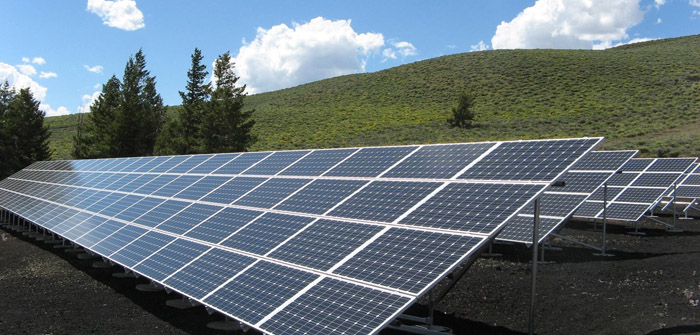(Photo | Pexels)
Clean energy jobs now account for nearly 60 percent of all energy industry jobs in Oregon with employment of 55,406 Oregonians, according to a new analysis of energy employment data by the national nonpartisan business group E2 (Environmental Entrepreneurs). Clean energy businesses now employ nearly 54,000 more Oregonians than Oregon’s entire fossil fuel industry now (1,422).
According to Clean Jobs Oregon 2019, Oregon’s clean energy economy ranks among the top 25 states for jobs in solar energy (14th), total renewable energy (20th), energy efficiency (20th), wind energy (21st), clean storage and grid modernization (23rd) and overall clean energy (22nd).
“This report shows that clean energy is an important job creator across every region in Oregon, employing more than 55,000 Oregonians in good jobs across the state,” said Governor Kate Brown. “Meeting the challenge of climate change is an incredible economic opportunity for Oregon. Doing nothing is not an option, not when we see how climate change is already hurting our rural communities and economy. Oregon can embrace this opportunity head-on by passing a market-based emissions reduction program during the 2020 legislative session.”
The report — which counts employment in solar energy, wind energy, energy efficiency, combined heat and power, bioenergy, non-woody biomass, low-impact hydro power, geothermal, clean vehicle technologies, clean energy storage, smart grid, micro grid, grid modernization and advanced biofuels — found 50 percent of clean energy jobs were based outside the Portland metro area, including more than 10,600 in rural areas.
“The findings in this report support what local businesses and a majority of state lawmakers already know — smart clean energy policies drive local job growth through our state,” said E2 Pacific Northwest Chapter Director Chris Dennett, Director of Strategy and Integration for The Tofurky Company, an Oregon-based food manufacturer. “By not passing cap-and-invest in 2019, lawmakers failed to accelerate investment in a sector ripe for growth. Decisive legislative action in 2020 is a must.”
Despite broad statewide employment, Oregon’s clean energy economy slowed in 2018, making it one of the only U.S. states that experienced slower job growth in clean energy (1.4 percent) than statewide employment (1.6 percent).
“One factor contributing to this slowdown has been the market uncertainty created by the recent impasse on the cap-and-invest bill,” said Andy Wunder, E2 Western States advocate. “To stay competitive in a rapidly shifting energy market and take full advantage of the burgeoning clean energy economy happening nationally, Oregon lawmakers must pass cap-and-invest during the 2020 session.”
Energy efficiency remains the largest clean energy sector in Oregon with more than 42,500 workers — up 600 jobs from 2017. Renewable energy — led by solar (5,700 jobs) and wind (1,350) — accounted for the second-most clean energy jobs (7,300), while the clean vehicles sector added about 400 jobs (2,600 total) for a 17.0 percent growth rate. In total, clean energy now accounts for nearly 60 percent of Oregon’s entire energy sector workforce (95,806 jobs).
Analyzing the state geographically, Clean Jobs Oregon 2019 found that all 36 counties in the state are home to clean energy workers, with eight counties supporting at least 1,000. Multnomah led all counties with more than 16,500 jobs, followed by Washington (13,000) and Clackamas (5,000) counties. By density, Morrow, Washington, Multnomah, Sherman and Hood River counties led the state in clean jobs per capita with all supporting at least 20 jobs per 1,000 employable residents.
In addition to the state report, E2 also produced district level fact sheets for all 30 state Senate districts, which include district-level job and investment data.
Other highlights from Clean Jobs Oregon 2019:
- 83.8 percent of clean energy workers are employed by businesses with fewer than 20 total employees.
- Co nstruction (58.9 percent) and manufacturing services (13.1 percent) make up the majority of clean energy jobs.
- 2,090 Oregonians now work in grid modernization (806) and energy storage (1,284).
- 10.6 percent of Oregonians employed in clean energy are veterans.
The report follows E2’s Clean Jobs America analysis, which found that the clean energy jobs account for nearly 3.3 million jobs across all 50 states and the District of Columbia. Both reports are based on data from the 2019 U.S. Energy and Employment Report (USEER) produced by the Energy Futures Initiative (EFI) in partnership with the National Association of State Energy Officials (NASEO). E2 is a partner on the USEER, the fourth installment of the energy survey first released by the Department of Energy in 2016 and now executed by a coalition including the E2.
More information about E2’s clean energy jobs research can be found at e2.org/reports.
Additional Resources:
- E2: Oregon Senate District Level Fact Sheets
- E2: Clean Jobs America 2019
- E2 + E4TheFuture: Energy Efficiency Jobs in America 2019
- E2: Clean Jobs Colorado 2019
- E2: Clean Jobs North Carolina 2019
- E2: Clean Jobs California 2019
- E2: Clean Energy & America’s Ocean Economy | By the Numbers
- E2: Clean Jobs Rural America 2019
- E2 + Clean Energy Trust: Clean Jobs Midwest 2019
- E2: Clean Jobs New York 2019
- E2: Clean Jobs Pennsylvania 2019
- E2: Clean Jobs Massachusetts 2019
- E2: Clean Jobs New Jersey 2019


